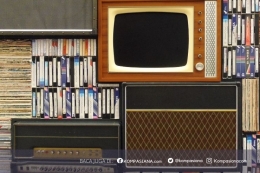Nontraditional Media
Traditional mass media all engage in one-way communication---from the source to the viewer, listener, or reader. Almost any other innovative way of delivering ad messages to consumers is considered to a nontraditional medium. These media disseminate advertising messages through means not usually called media. For example, the combination of magazines and sales promotion is sometimes called nontraditional media, even though sales promotion has not historically been categorized as a medium. Similarly, Internet advertising, though certainly not traditional, is generally viewed in its own category as a new electronic medium.
Nontraditional media can fill an advertiser's need to find alternative ways of reaching customers in venues where advertising will stand out from the advertiser's competition. They also satisfy the need for additional revenue from companies that have exposure to the public and feel that their unique location offers an opportunity to sell advertising. The most commonly used nontraditional media include television screens in airport waiting areas and doctors' offices, and poster in health clubs, on golf courses, and at public events. placement of advertising in other locations, such as the walls of public restroom, the floor of grocery stores, and overhead luggage bins of commercials airlines, may be driven more by a proprietor's desire for additional income than by the advertiser's need for an alternative venue.
Many media planners recommend that their clients use nontraditional media, but there have been some problems in determining what advertiser receives for the money. The problems are caused by not having any continuing measurements in audience sizes delivered by this less established media. In addition, what information does exist is typically provided by the media themselves, raising questions about its accuracy and objectivity. In most instances, planners have to "guesstimate" the sizes of audiences. Without independent measurements, it is difficult to calculate a cost per thousand exposures that represents the value of the money spent for advertising related to the number of audience members delivered.
Specialized Media
Special-interest consumer magazines appeal to specific reader interest such as skiing, money management, photography or antiques. These magazines are read as much for their advertising as they are for their editorial content. Therefore, these magazines often attract readers who purchase the magazine not only for the editorial material, but also for information on the kinds of products advertised. Such media often referred to as niche media because of their special-interest focus.
A large category of media also exist to meet the specialized needs of industrial manufacturers, service companies, wholesalers, retailers, and professional workers such as physicians, attorneys, and teachers. These media take the form of publications that contain editorial matter as well as advertising pertaining to the specialized market, but they also include films, trade shows, convention exhibits, and cassette tapes. These magazines are often provided free to readers, paid for entirely for advertisers who want to reach a specialized audience. Business-to-business advertisers are typically the advertisers most interested in these publications.
Other specialized media exist exclusively for delivering advertising messages. They carry no editorial matter and are nor sought after by readers as are other forms of media. Such advertising-oriented media include handbills, direct mail, outdoor billboards, car cards that appear on buses or trucks, and free-standing inserts (FSIs) in newspapers.
Another specialized medium is the catalog. Although consumers often request catalogs, they look at catalogs less frequently than mass media. At the same time, many advertisers find catalogs, productive because consumers use them as shopping guides. One form of catalog is the telephone book, which carries advertising but also carries editorial matter---telephone numbers. Plumbers, for example, might justifiably use telephone book advertising exclusively, because plumbers are not usually called until emergency arises. On such occasions, the consumers will search ads in the Yellow Pages to find a plumber but probably will not notice such ads at any other time. (Rizki Ramadhani/Retype from Advertising Media Planning book)
Follow Instagram @kompasianacom juga Tiktok @kompasiana biar nggak ketinggalan event seru komunitas dan tips dapat cuan dari Kompasiana. Baca juga cerita inspiratif langsung dari smartphone kamu dengan bergabung di WhatsApp Channel Kompasiana di SINI







